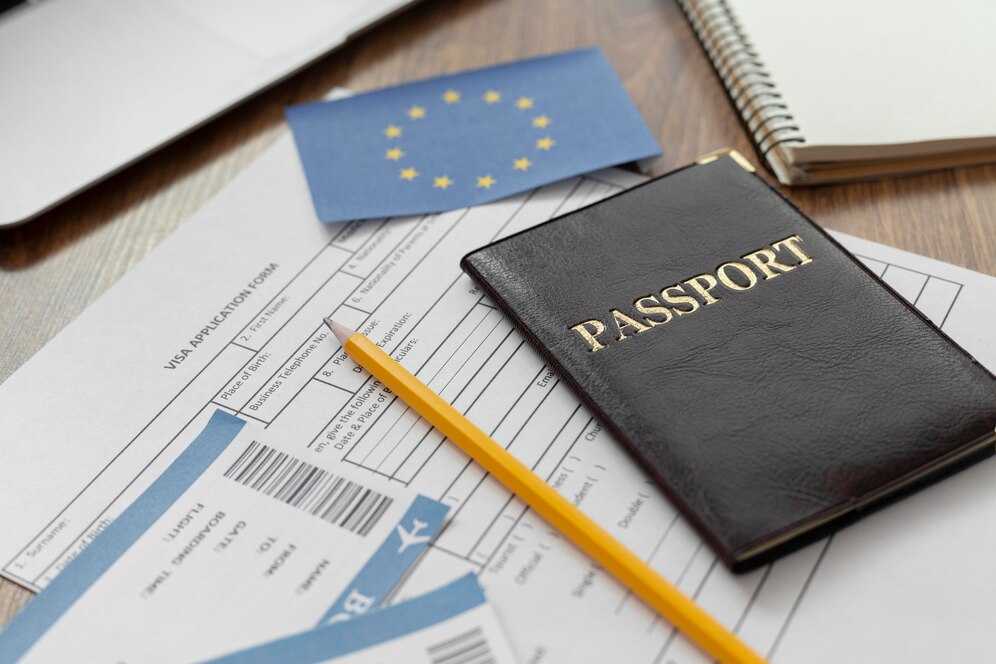
Embarking on a journey to explore the enchanting landscapes and rich cultures of Europe is a dream for many. However, before you set foot on European soil, there’s an essential step to take: obtaining a Schengen visa. In this guide, we’ll walk you through the process step by step, ensuring a smooth and hassle-free application experience.

Step 1: Determine Your Purpose of Travel
Before diving into the application process, it’s crucial to identify the purpose of your visit to Europe. Whether it’s for leisure, business, education, family reunion, or other reasons, understanding your travel intentions will help streamline the visa application process.
Step 2: Identify the Schengen Member Country to Apply
The Schengen area comprises 26 European countries, each with its own embassy or consulate handling visa applications. Determine the primary destination of your trip and apply for a Schengen visa at the embassy or consulate of that specific country. Research visa requirements and processing times for your chosen destination to ensure a smooth application process.
Step 3: Gather Required Documents
Compile all the necessary documents required for your visa application. These typically include:
- Completed Visa Application Form: Obtain the application form from the website of the embassy or consulate where you will be applying.
- Valid Passport: Ensure your passport is valid for at least three months beyond your intended stay in the Schengen area and has at least two blank pages for visa stamps.
- Passport-Sized Photographs: Provide recent passport-sized photographs that meet the specifications outlined by the embassy or consulate.
- Travel Itinerary: Prepare a detailed itinerary of your trip, including flight reservations, accommodation bookings, and planned activities.
- Proof of Accommodation: Provide evidence of your accommodation arrangements in the Schengen area, such as hotel reservations, a letter of invitation from a host, or rental agreements.
- Travel Insurance: Obtain travel insurance covering medical expenses, emergency medical evacuation, and repatriation for the duration of your stay in the Schengen area, with a minimum coverage of €30,000.
- Proof of Financial Means: Demonstrate sufficient financial means to cover your expenses during your stay in the Schengen area, such as bank statements, sponsorship letters, or proof of employment and income.
- Letter of Employment: If you are employed, provide a letter from your employer stating your job position, salary, and approved leave of absence (if applicable).
- Additional Documents: Depending on the purpose of your visit, you may need to provide additional documents such as a letter of enrollment from an educational institution, a business invitation letter, or proof of family ties. also read Eligibility Criteria
Step 4: Schedule an Appointment
Contact the embassy or consulate of the Schengen country where you plan to apply for your visa to schedule an appointment. Some countries may allow you to schedule appointments online through their visa application portal, while others may require you to do so via email or phone. Plan your appointment well in advance to secure your preferred date and time.
Step 5: Submit Your Application
On the day of your appointment, submit your visa application along with all the required documents to the embassy or consulate. Be sure to arrive on time and dress appropriately for your appointment. Review your application and documents carefully before submission to avoid any errors or omissions that could delay processing.
Step 6: Attend Visa Interview (if Required)
Depending on the embassy or consulate’s policies, you may be required to attend a visa interview as part of the application process. Prepare yourself by familiarizing yourself with your travel plans, including your itinerary, purpose of visit, and financial situation. Be honest and concise in your responses during the interview, and provide any additional information or documents requested by the consular officer.
Step 7: Pay Visa Fees
Most Schengen countries require applicants to pay a visa fee upon submission of their application. The fee amount may vary depending on the country and type of visa being applied for. Be sure to inquire about the fee structure and payment methods accepted by the embassy or consulate. Keep proof of payment for your records and include it with your visa application.
Step 8: Await Visa Processing
After submitting your application and attending any required interviews, allow sufficient time for the embassy or consulate to process your visa. Processing times may vary depending on factors such as the volume of applications, the time of year, and the complexity of your case. Monitor the status of your application online if available, and contact the embassy or consulate if you have any questions or concerns.
Step 9: Collect Your Visa
Once your visa application has been processed, you will be notified by the embassy or consulate. Schedule a time to collect your visa, and ensure you have all the necessary documentation to retrieve it. Carefully review the details of your visa, including the validity dates, number of entries allowed, and any specific conditions or restrictions.
Step 10: Enjoy Your Trip to Europe!
With your Schengen visa in hand, you’re all set to embark on your European adventure. Pack your bags, double-check your travel plans, and get ready to create unforgettable memories in the heart of Europe!
Benefits of a Schengen Visa
Obtaining a Schengen visa comes with a myriad of benefits, making it easier and more convenient for travelers to explore Europe:
1. Seamless Travel Experience
A Schengen visa allows holders to travel freely within the Schengen area, eliminating the need for multiple visas when visiting multiple countries. Whether you’re hopping from Paris to Rome or from Amsterdam to Barcelona, you can move seamlessly across borders without the hassle of additional paperwork or visa applications.
2. Flexibility in Travel Plans
With short-stay visas valid for up to 90 days within a 180-day period, travelers have the flexibility to plan their European itinerary according to their preferences. Whether you’re embarking on a whirlwind tour of multiple countries or indulging in a leisurely stay in one destination, a Schengen visa allows you to tailor your travel plans to suit your interests and schedule.
3. Cost-Efficient Travel
By obtaining a single Schengen visa, travelers can save both time and money on visa application fees compared to applying for individual visas for each Schengen country. Instead of navigating multiple visa processes and paying separate fees for each destination, a Schengen visa offers a cost-effective solution for exploring Europe.
4. Access to Diverse Destinations
The Schengen area encompasses 26 European countries, offering travelers a wealth of diverse destinations to explore, from bustling cities to tranquil countryside. Whether you’re drawn to the iconic landmarks of Paris, the sun-drenched beaches of Greece, or the picturesque landscapes of Switzerland, a Schengen visa grants you access to an array of cultural, historical, and natural attractions across the continent.
5. Enhanced Business Opportunities
For business travelers, a Schengen visa opens doors to networking opportunities, conferences, and meetings across multiple European countries without the hassle of obtaining separate visas. Whether you’re attending a trade fair in Germany, meeting clients in Italy, or participating in a conference in Spain, a Schengen visa facilitates seamless travel for business purposes, allowing you to focus on your professional objectives without logistical barriers.
6. Strengthened International Relations
The Schengen visa system promotes cross-border cooperation and strengthens international relations between European countries and non-EU nations, fostering greater cultural exchange and understanding. By facilitating travel and fostering connections between people from different countries and cultures, the Schengen area contributes to the promotion of peace, cooperation, and mutual respect on a global scale.
7. Facilitated People-to-People Contacts
By simplifying the visa application process, the Schengen visa regime encourages increased people-to-people contacts, promoting tourism, trade, and cultural exchange between countries. Whether you’re connecting with relatives, meeting friends, or forging new friendships with locals and fellow travelers, a Schengen visa facilitates meaningful interactions and fosters a spirit of openness, collaboration, and mutual enrichment.
8. Enhanced Security Measures
While promoting ease of travel, the Schengen area also implements robust security measures to ensure the safety and well-being of both residents and visitors. Through measures such as visa screening, border controls, and information sharing between member states, the Schengen area maintains high standards of security while upholding the principles of freedom of movement and open borders. Travelers can enjoy peace of mind knowing that their safety is a top priority within the Schengen area, allowing them to focus on enjoying their European experience to the fullest.
In conclusion, obtaining a Schengen visa offers a plethora of benefits for travelers, facilitating seamless travel experiences and opening doors to unforgettable adventures in Europe. Whether you’re exploring historic landmarks, indulging in culinary delights, or immersing yourself in vibrant cultural festivals, a Schengen visa provides the passport to unlock the treasures of Europe and create memories that will last a lifetime.
For the latest updates or specific requirements regarding Schengen visa applications, it’s always best to visit the official website of the embassy or consulate of the Schengen country you plan to visit. Additionally, if you have any questions or need expert advice on your visa application process, feel free to contact us. Our team is here to assist you with free expert advice and guidance to ensure a smooth and successful visa application experience. Don’t hesitate to reach out to us for personalized assistance tailored to your needs.






